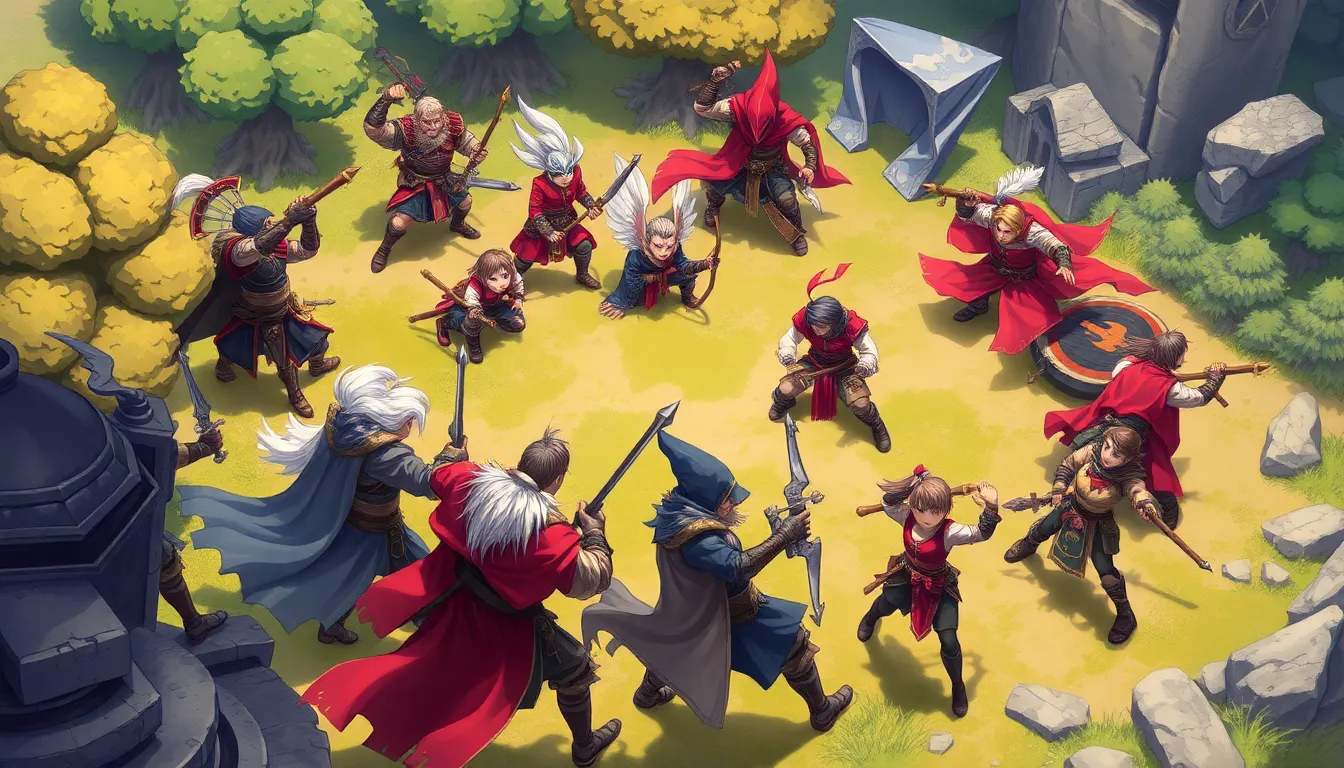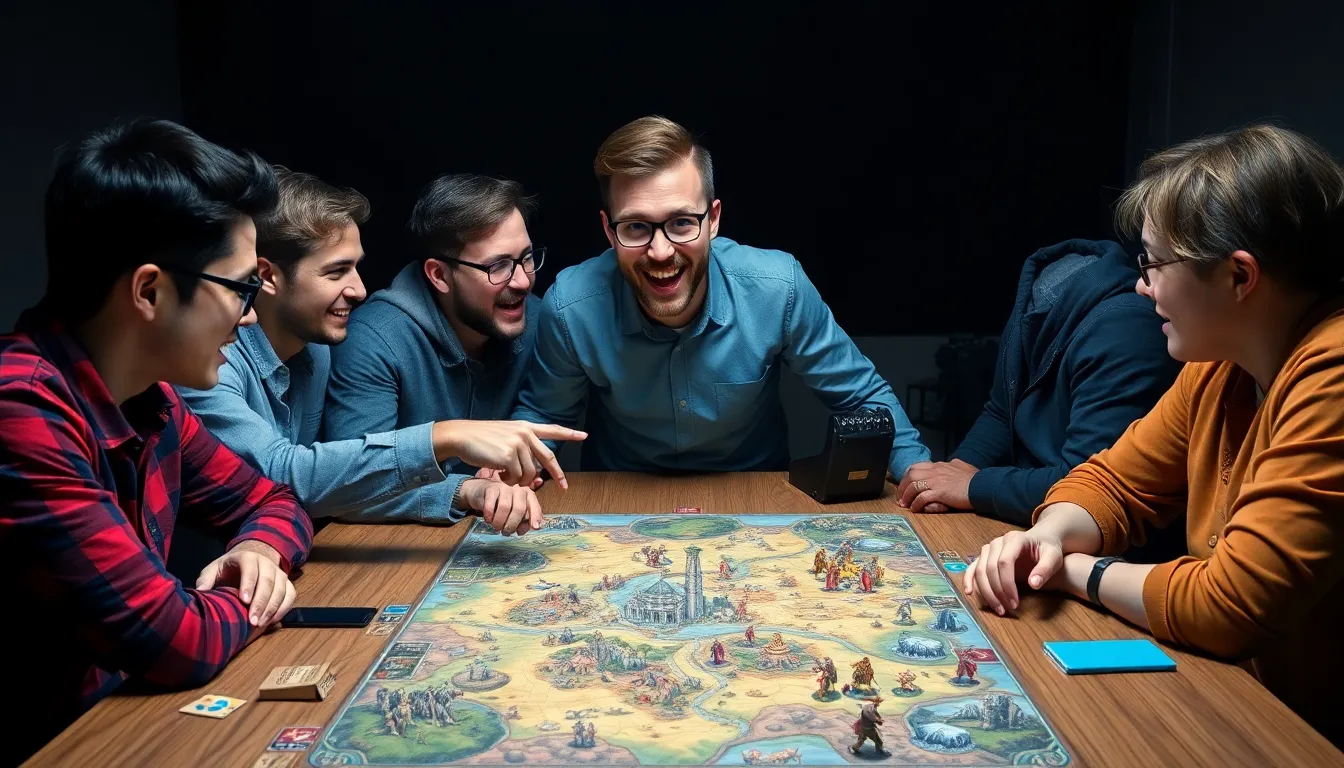In a world where chaos reigns and battles rage on, turn-based combat offers a refreshing pause button. Picture this: warriors strategizing like chess grandmasters while their opponents sweat bullets. It’s not just about who can click the fastest; it’s a dance of wits, tactics, and sometimes, a little luck.
Turn Based Combat
Turn-based combat stands as a popular feature in many video games, emphasizing strategic gameplay over reflexes. Players enjoy this method as it allows for thoughtful planning and decision-making before executing actions.
Definition of Turn Based Combat
Turn-based combat refers to a gameplay style where players and enemies take turns executing actions. Each player or enemy has a set amount of time to plan and carry out strategies. This approach contrasts with real-time combat systems, emphasizing careful decision-making and tactical maneuvers. Players often evaluate their options, managing resources and positioning to gain an advantage. Popular titles such as “Final Fantasy” and “XCOM” illustrate this mechanics effectiveness.
History of Turn Based Combat
The origins of turn-based combat trace back to early tabletop games like “Dungeons & Dragons.” This system influenced the design of many early video games, which adopted similar mechanics for strategic depth. The 1970s and 1980s saw a rise in turn-based titles, with games like “Civilization” and “Dragon Quest” gaining popularity. Over the years, turn-based combat continued to evolve, incorporating more complex systems and richer narratives. Modern interpretations find success in both traditional RPGs and tactical shooters, demonstrating its enduring appeal in the gaming landscape.
Key Mechanics of Turn Based Combat

Turn-based combat relies on specific mechanics that define gameplay. Understanding these mechanics enhances the strategic experience.
Action Points and Turn Order
Action points govern the ability to perform actions during combat. Players manage points to execute attacks, use items, or defend. Turn order determines which character acts first, impacting strategy. Initiative often influences turn order, leading to tactical advantages. Characters with higher initiative move before slower ones, allowing them to react to threats. Players must plan actions around their available points and the order of opponents. Successful management of action points and turn order can dictate the outcome of battles.
Tactical Decision Making
Tactical decision-making plays a crucial role in turn-based combat. Players analyze the battlefield to choose optimal actions. Factors include character strengths, enemy weaknesses, and environmental advantages. Selecting the right skills or items often shifts the tide of battle. Long-term planning and foresight contribute to success. Players frequently need to adapt their tactics based on opponents’ moves. Every decision carries weight, influencing the progression of combat. Overall, strategic thinking and adaptability define mastery in turn-based scenarios.
Popular Turn Based Combat Games
Turn-based combat games have shaped gaming history. Their strategic elements engage players and promote critical thinking.
Classic Titles
“Final Fantasy,” released in 1987, stands as a landmark in turn-based RPG history. “Civilization” began in 1991, allowing players to manage empires thoughtfully. “Dragon Quest,” first introduced in 1986, emphasized character development and narrative depth. Titles like “X-COM: UFO Defense,” emerging in 1994, blended tactics with resource management. Each of these games laid the foundation for the genre, showcasing rich storytelling alongside complex mechanics, ensuring their lasting popularity.
Modern Innovations
Recent titles continue to push turn-based combat forward. “Fire Emblem: Three Houses” integrates deep character relationships and customizable strategies. “XCOM 2” enhances tactical gameplay with destructible environments and advanced AI. “Persona 5” merges lifestyle simulation with turn-based battles, offering unique combat experiences. “Divinity: Original Sin 2” features a dynamic and interactive world where player choices heavily impact outcomes. Each modern game reinforces the classic appeal while introducing novel mechanics, maintaining enthusiasm for turn-based strategies.
Advantages of Turn Based Combat
Turn-based combat offers several significant advantages that enhance the gaming experience. Players enjoy strategic planning and thoughtful decision-making during their turns, making each action impactful.
Strategic Depth
Turn-based combat emphasizes tactical depth, allowing players to analyze the battlefield carefully. Players can weigh their options against enemy strengths, weaknesses, and environmental factors. Every decision creates opportunities for counters or advantages, akin to a game of chess. Strategy becomes crucial as players must anticipate their opponent’s moves. Comprehensive planning enables more rewarding gameplay experiences and enhances satisfaction upon victory.
Accessibility for Players
Accessibility defines turn-based combat as a welcoming option for diverse gamers. Players with varying skill levels appreciate the slower pace compared to real-time systems. This format allows newcomers to grasp mechanics without feeling rushed. Additionally, turn-based combat minimizes the physical demands of rapid reflexes, enabling a wider audience to engage. It caters to those who prefer methodical pacing, promoting inclusivity within the gaming community.
Challenges in Turn Based Combat
Turn-based combat presents unique challenges that can impact player engagement and enjoyment.
Game Pace and Engagement
Players experience a distinct pace in turn-based combat that can affect their overall engagement. Slow decision-making may lead to moments of tension, but it can also create feelings of impatience among some players. Each turn grants opportunities for strategic thinking, yet extended wait times might disengage those preferring quicker action. Managing game flow becomes essential, as maintaining player interest requires striking a balance between thoughtful decisions and engaging gameplay. Some games incorporate timers to increase urgency, ensuring players remain focused while making choices. This tension can enhance the excitement, yet an overload of content may also confuse or frustrate players.
Balancing Complexity and Simplicity
Complex mechanics often entice players, but they can also overwhelm those seeking simpler experiences. Some games incorporate intricate systems that appeal to veteran players, while newcomers may struggle to grasp the mechanics quickly. Ensuring clarity in gameplay features fosters a better player experience without sacrificing depth. Excellent tutorials and intuitive interfaces can help bridge the gap, allowing players to learn the game gradually. Balancing intricate strategies with accessible gameplay attracts a wider audience, encouraging participation across skill levels. Developers must consider these factors carefully to create an enjoyable experience for all.
Conclusion
Turn-based combat remains a beloved genre in gaming due to its strategic depth and accessibility. Players appreciate the chance to think critically and plan their moves, making each decision count. The balance between complexity and simplicity is crucial for keeping both new and veteran players engaged.
As the genre evolves, modern titles continue to innovate while honoring the classic mechanics that defined turn-based gameplay. This enduring appeal ensures that turn-based combat will remain a staple in the gaming landscape, attracting a diverse audience eager for thoughtful and engaging experiences.

